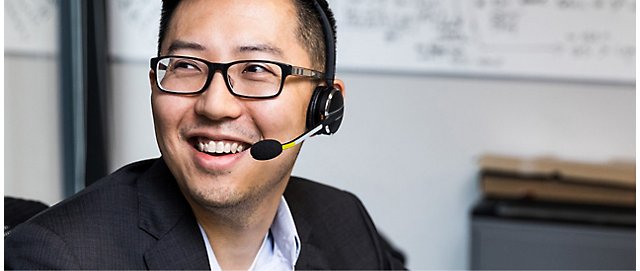Thomas Concrete Group broke new ground with its IoT sustainable concrete offering with Microsoft solutions. The group aims to lead the construction industry’s reduction of its carbon footprint by using data to provide insight into its concrete. By offering embedded concrete sensors connected to algorithms developed in house and developing new concrete mixes using sustainable binders, Thomas Concrete Group delivers the cutting edge of concrete technology. The group put its data on Microsoft Azure and used other Microsoft solutions to develop and deploy a new IoT service. Now, it is easier for Thomas Concrete Group clients to reduce their carbon footprint while delivering projects faster and reducing waste.


With a culture built around teamwork and environmental sustainability, Thomas Concrete Group puts an emphasis on treating people and the planet well by innovating through the inherent challenges of the concrete industry. The company produces close to 6 million metric tons of concrete per year, and traditional concrete mixes rely on cement, a carbon-intensive material, as a binder. Instead of accepting the status quo, Thomas Concrete Group pursues technological advances to reduce carbon dioxide emissions by using alternative binders. It also promotes sustainable methods in the construction industry, which has been slow to prioritize green approaches.
Thomas Concrete Group launched its first sustainable concrete product more than 10 years ago. “As it turns out, we offered green concrete to the market before our customers were ready for it,” says Lennart Björnström, Chief Information Officer and Head of Business Development at Thomas Concrete Group. “But now, the entire industry wants to be sustainable.” The group is helping lead the drive toward sustainable construction with Internet-of-Things (IoT) solutions on Microsoft Azure. “With our IoT devices and Azure services, customers have the insight and knowledge they need to move to more sustainable products,” says Björnström.
Developing innovative solutions to bring sustainability to the heart of the construction industry
Founded in 1955 in Sweden, Thomas Concrete Group is an independent, family-owned organization that pairs its products with services. For many years, the company has offered to send technicians to construction sites with sensors that detect the structural qualities of concrete as it dries. However, it could only provide this laborious service to a few companies at a time. This service also didn’t provide the level of predictive insight that the group wanted to offer its customers.
The group saw a huge opportunity to increase the sustainability of construction with analytics. As the industry starts exploring alternative binders that lower emissions, some companies might be concerned about working with unfamiliar materials. Thomas Concrete Group wanted to provide a simple solution to help its customers become more comfortable using sustainable materials. “We want to offer a plug-and-play solution that our customers can use to plug in the sensor and push the ‘on’ button,” says Björnström. “We can then collect the data in Azure and provide insight.”
This wasn’t the first time that Thomas Concrete Group had offered an Azure-based solution to its clients. In 2019, the group created an app, My Concrete, that streamlined order and delivery management for its customers. A year later, it added concrete maturity reporting in real time to My Concrete, using services such as an Azure data warehouse to enhance the app. The groundbreaking IoT service, which offers digital forecasting of concrete strength development, was first introduced a few months later. “This service is helping our customers build a more sustainable society every day,” says Björnström.
Pioneering IoT to accelerate sustainable transformation
Many construction companies would like to switch to more sustainable products, but they don’t have the experience required to make the transition without unforeseen costs. And although sustainability is important, safety and quality are always the priority. “Customers set the key parameters for the concrete they need,” says Björnström. “Our question was, ‘How can we use the back-end systems we already have in Azure to help construction companies verify that their needs are being met with sustainable products?’”
The new IoT offering builds on Thomas Concrete Group’s existing Azure systems to empower clients with another level of insight. Sensors embedded into the wet concrete transmit data to the group’s Microsoft solutions, where the company can package the raw data for direct delivery to customers or provide it through dashboards on its app. Thomas Concrete Group produces a forecast using a combination of digital strength measurements from its sensors, a large amount of historical data from previous measurements, and weather reports from Azure services. The result is a prediction of the concrete’s future hardening process. Now, instead of sending technicians out to check concrete characteristics manually, Thomas Concrete Group offers its analytics at scale.
By delivering a real-time forecast of the future properties of its product, Thomas Concrete Group makes it easier to plan work at construction sites. “The forecast makes it possible to plot the future strength development of the concrete easily. If necessary, measures can be taken to ensure the quality of the casting and avoid cracking,” says Björnström. “The construction process can then be streamlined by making decisions in advance regarding future resource requirements, such as personnel, equipment, and other factors that also save time and money.”
Reflecting on the pace of development, Thomas Concrete Group emphasizes the usefulness of Microsoft solutions. “We have a global IT team of 20, and there is no way that we could have delivered this project without using Azure and prebuilt services from Microsoft,” says Björnström. Using Azure IoT solutions, the group could experiment freely, deploying different tools and removing them quickly if they didn’t fit the use case.
Providing a lifetime of data to enhance concrete performance
Thomas Concrete Group is pleased with the results of its new IoT offering, but company leaders emphasize that this is only the first step. As customers get more comfortable with digitally driven sustainable concrete, the group is looking to engage vendors and make it easier for them to shift to green solutions as well. “The next step is to connect vendors, business partners, and customers on what we’re calling our collaboration platform,” says Björnström.
The group is proud to have demonstrated that the right data can help the construction industry undertake sustainable transformation with confidence. “If you zoom out a bit, our industry is behind, but it’s waking up to the promise of digitalization and sustainability,” says Björnström. “We’re so excited to help lead the way with Microsoft.”
“Customers set the key parameters for the concrete they need. Our question was, ‘How can we use the back-end systems we already have in Azure to help construction companies verify that their needs are being met with sustainable products?”
Lennart Björnström, Chief Information Officer and Head of Business Development, Thomas Concrete Group
Explore related stories
Fuel innovation with Microsoft

Talk to an expert about custom solutions






Follow Microsoft